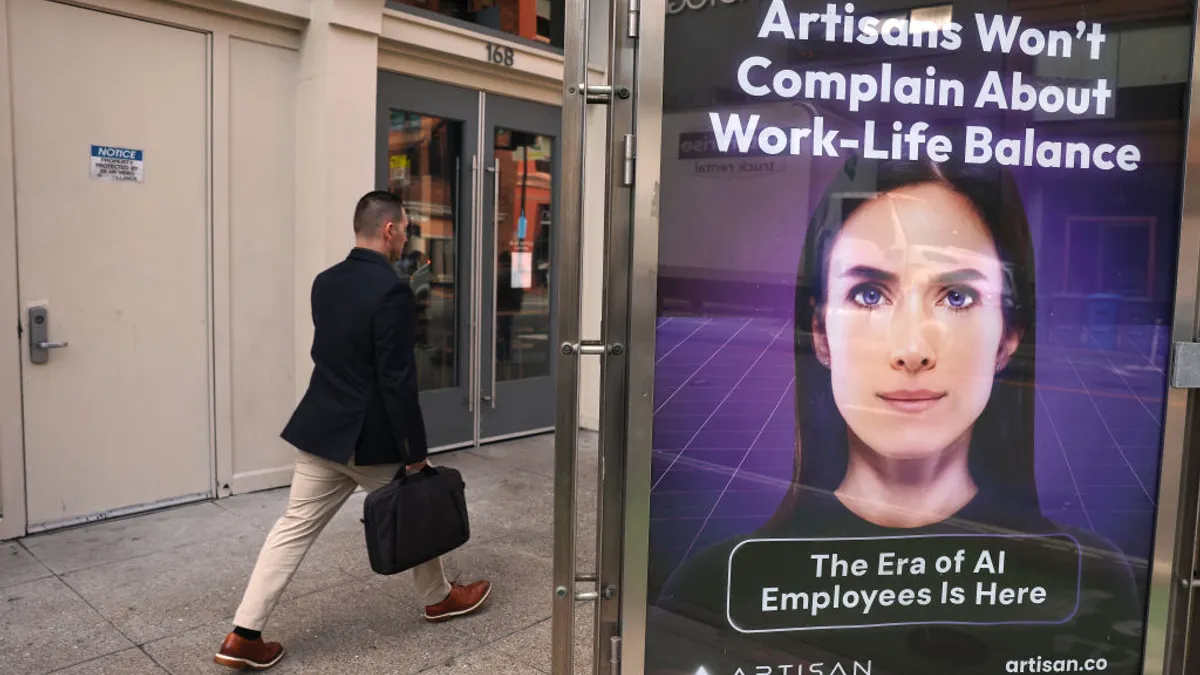Editor's note: The following is a contributed piece by Andrea Pretorian, an operations and marketing consultant.
Wondering why you're having trouble attracting or retaining top-notch tech talent? It likely has something to do with your company's culture. Almost half of all HR leaders blame burnout for up to half of their turnover.
A cheerful, upbeat office is not enough anymore. Thirty-five percent of employees surveyed ranked their job satisfaction at a six or less on a 10-point scale, and industry experts cite disengagement as the key reason.
That's not even focusing on the intensely competitive tech culture. Developers, engineers, and everyone in between are involved in an industry that is notoriously taxing and prone to burnout, with almost 60% of employees reporting that they are suffering from symptoms of burnout.
But adding in a few beanbags and trying to make the office "more fun" is not enough. Employees feel more motivated when they know they can align their goals with their company's goals and continue to grow.
A learning culture keeps the ball moving. Employees can grow their career potential and gain exposure to new ideas. It's also a great way to support keeping your people competitive while encouraging them to stay onboard.
So what can be done to make it better? Ask yourself the following questions about your company's environment to find out where you can improve.
Are you inadvertently encouraging long hours and burn-out?
Competitive high-achievers are at particularly high risk to work overtime and push themselves too hard. Good management looks out for this and makes sure everyone is well-cared for.
The first step is to set clear expectations for the work day as well as document internal processes. This helps ensure that everyone is on the same page about what's expected of them while also preventing accidental time drains.
You need to be sensitive about what you reward as being normal and good within the workplace. Discourage bragging about long hours. Encourage employees to take holidays. Revise daily life at your company to fight burnout. Solicit feedback from your people — they can shed light on what they need.
Do people have a sandbox for learning experimentation and paid time to learn?
You cannot reap the rewards of a learning without putting in the steps and space to sow the seeds.
Consider personal resolutions like being more organized. The only way this intention can become a reality is if you create the necessary spaces to put things so they can be well-organized.
The same goes for learning experimentation.
At the minimum, give your employees a fixed bit of time each week for them to brainstorm directions for their projects, even personal ones. Can you give them a stipend so they can take a class online or even attend lectures in person?
Don't be afraid to take it even further. What if your company adopted a 'lab mindset'? What if you told your employees to make learning and innovation continuous parts of their lives? What if you measured their success within the context of being expected to learn as much as possible and experiment?
An intrinsic component of such an environment is a forgiving attitude toward mistakes. Simply ensure your employees learn something from every mistake or failed experiment.
The bottom line here is that you need to be willing to give resources to your people so they can learn. You will reap the benefits of their learning, after all, so give them a chance to do it better with your support.
Does everyone on the team feel like they have a voice that is heard?
It can be difficult to establish a culture of genuine inclusivity and collaboration, but experts agree it's a critical step to maintaining a successful team.
Everyone should feel welcome to participate without fear of judgment or criticism for sharing their ideas, even the far-out ones. This will create better brainstorming and more interesting discussions among team members, allowing better rapport and problem-solving skills to develop.
Host meetings where everyone gets unplugged from their devices and has to speak to each other, face-to-face. This helps everyone focus on what is being said and builds rapport. Tapping into every opportunity you have to get team members actively listening to each other is key; they will hear each other, and they will also learn about each other's needs.
Leaders in your company need to make sure their employees know they are being heard. This means keeping appointments and prioritizing internal meetings. This also means paying close attention to team dynamics. Just because you don't hear any complaints doesn't mean there are no issues. Does everyone on the team chat with everyone else, or when you look closer, do you discover cliques? Some people will get along more naturally with one person rather than another. This is to be expected. But what you want to keep an eye out for are divisions based on specific demographics that single out employees. If you spot these problems, remember that there is no single catch-all solution; you need to adjust according to the situation.
A great starting point is to privately address the person who is singled out and ask them about team dynamics, without letting on that you see any conflict. It might be best to mention this in passing during a regular meeting you already have with them. Does he or she enjoy working on the team? What improvements would he or she recommend?
Are you incentivizing learning?
Do your employees have a track for landing raises and promotions? It's important to have these paths mapped out and defined, and that they see how furthering their knowledge will help them proceed on the career ladder. Be sure to maintain regular one-on-one performance reviews where both you and your employees discuss goals and progress.
Team goals are also critical, because they encourage collaboration. Adding a clear incentive toward helping each other helps create the space within the work environment for your people to actually sit down and learn, as well as to ask each other questions and support each other in learning.
Are you designing your program to be relevant to your team?
You need to customize training to match your team's experience, be relevant to their roles, and enhance their productivity. The experience component is critical because you want to make sure you aren't oversimplifying explanations or losing people on pieces that are too dry or too far-removed from what they're working on.
Making training relevant to your team's roles ensures that they are able to continue applying what they've learned so that it actually sticks over time. If it also enhances their productivity, you automatically incentivize its learning — who doesn't want to work smarter?
Your culture determines the caliber of talent you attract
Job seekers don't want to join a company where they they put their careers in jeopardy of stagnation. For the employees you already have, it's important to remember that negative work attitudes are contagious. Maintaining a learning culture is one way to keep your employees productive and engaged. It's a vital piece of work culture, along with diversifying perspectives and training positive management.




















